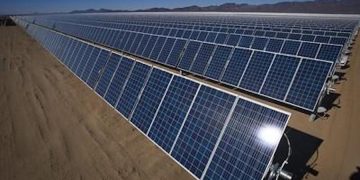Solar is hitting more developed stages, but these three technologies have the potential to generate alpha. We highlight the background, companies behind them, and most importantly: what to do.
Solar pros joke that their jobs are “a ride on the solar coasterâ€. It’s an exhilarating sprint at breakneck speed through chaotic peaks and valleys. In the end, you’ve either had the time of your life or you lose your lunch. And, with the ITC phase-out, lots of investors will lose their lunch.Â
Angel investors who want to exit the coaster with solid ROI need to evaluate emerging technologies outside of solar installation companies.
Returns are hard to find in installation because solar companies are loaded down with debt and locked into a cutthroat race. They provide virtually identical panel systems that are undifferentiated commodities in the eyes of the consumer. To win customers, solar companies are forced to spend a fortune on marketing. With the federal government phasing the investment tax credit to 10% for commercial installers and 0% for residential installers in 2022, many small companies with weak balance sheets will go out of business.
While the installation segment is cutthroat, the good news is that huge sums of money have been pumped its way into exciting new developments that provide unique competitive moats around supply and storage products. Here are three fascinating technologies that stand out from the sea of competition.
Black solar panels
For years, solar companies pumped out higher efficiency panels year after year. Manufacturers promising a better panel were a solid investment thesis. But, in recent years panel efficiency as peaked at around 15-18% across the industry. This gridlock is part of why installers have a hard time differentiating their businesses.
Well, it turns out that science delivered a better way to capture more solar energy in 2011 with black solar panels! So what’s been the holdup? Why don’t our solar roofs look like a cross-section of the Death Star? Why hasn’t there been a flurry of startups centered around these new panels?
Because it’s just now become viable. Let’s go through a quick overview of silicon cells to tie all this together.
A solar panel is a giant block of photovoltaic cells that capture photons and create an electric current. Silicon is the main ingredient in these cells. There are two kinds of silicon cells–pure and multi-crystalline. Pure silicon is fantastic at catching sun rays but very expensive. For affordability’s sake, manufacturers use cheaper but less efficient multi-crystalline cells. These are the blue panels that you see gleaming on rooftops and solar fields. Unfortunately, multi-crystalline cell panels reflect 40% of sun rays.Â
In 2011, researchers discovered that dry etching silicon with grooves dropped reflectivity to 6%.
The process “etches it into a forest of nanoscale needles…Those needles grab the light and don’t let it get away. It’s like looking into the eyes of Darth Vader.†The cool black shine is an after effect.
Joshua Pearce, Electrical Engineering and Material Science Professor at Michigan Tech
It seems like a no brainer to mass-produce black panels, right? Not so fast. The initial attempts to commercialize dry-etched solar panels failed. Even though they captured more sunlight, the etching degraded the surface from an electrical perspective.
Enter Aalto University in Finland.
Aalto researchers discovered that an “atomic layer deposition coating†mitigated the performance downgrade, skyrocketed production to 22% efficiency. This breakthrough drops total costs by 10%!
Dry etched panels are certain to be the industry standard going forward. Analysts predict that black panels will have 55% market share by 2027. Several Chinese giants have committed to mass production, but the American market has yet to produce a leader. Keep an eye out for manufacturers and suppliers who specialize in black panel technology.Â
Black panels will also provide better opportunities in areas where solar doesn’t have widespread appeal. The higher efficiency and lower cost mean that the value proposition for low return states is going to change for the better.
Subsurface geomechanical pumped storage
The alternative energy industry is a prime example of the 21st century’s push for socially conscious innovation. The modern investor no longer tolerates progress at all costs. In fact, many see the solar and wind space as a last-ditch effort to save humanity from the consequences of 19th and 20th-century industrialization gone off the rails.
Solar produces 7% of US energy, with experts predicting 35% production by 2050 according to the Center for Climate and Energy Solutions.
There’s just one problem–the grid can’t handle the backload of off-peak surplus energy! Certain districts in high adoption states like New Jersey can’t even allow new installations. Batteries are one way to solve this problem. But, it turns out that relics from the oil and gas industry hold promise for solar energy storage.
The plan: store excess energy in abandoned oil and gas wells. This novel idea takes inspiration from hydro pumping. The hydro pump process uses surplus energy to push water upstream to a reservoir in dam. When electric demand kicks in, the dam releases the water which then spins turbines to generate an electric current.
Quidnet Energy is working to adapt this process to handle excess renewable energy without building new dams. They intend to pump water into the forgotten wells for storage, and then release the water to spin turbines to satisfy off peak electric demand. While this process requires some degree of engineering innovation, research and development costs are unlikely to be high.
“We aren’t re-inventing the wheels here. We are taking two well-known things, engineering permeability and hydropower, and putting the two together.”
Aaron Mandell, Quidnet Energy Co-Founder
In spite of the technical requirements, total costs won’t be astronomical due to the fact that this start-up makes use of existing infrastructure. Real-estate costs will be low because these projects will use cheap land that has already been developed. While technology is nascent, a limited number of investment opportunities are sure to appear soon.Â
Solid-state batteries
The need for energy storage has created a flood of investment opportunities around battery technology. One of the most promising developments is the single state battery.
To fully grasp the single state battery’s value proposition, we first need to understand the lithium-ion battery. It powers smartphones, laptop batteries, EV batteries–basically anything more complex than a graphing calculator.
What’s there to improve on? Lithium batteries house electrolytes in a fluid that is unstable and combustible. Operating currents need to remain in a safe range. Manufactures maintain a steady-state with safety circuits, driving up the cost. Safety circuit failures are rare, but the risk of battery explosion lingers.Â
Lithium-ion batteries aren’t a good fit for the entire world either. Their 60 degrees Fahrenheit storage requirement limits market penetration. You’d have to ship refrigerators hot spots of the world!
Solid-state batteries solve the safety and market reach problem because they aren’t made with unstable liquid. This eliminates the risk of combustion and the need for safety circuits, bringing down the price. On a grander scale, the enhanced stability opens the developing markets in Africa and Southeast Asia.
“Solid-state batteries allow higher operating temperatures due to better thermal stability and thus the lesser cooling requirements make it particularly interesting for these locations.â€
Julian Jansen , Energy Storage Researcher , from PV Magazine,
Experts say solid-state batteries won’t be a leading solution until 2025, meaning that this is the perfect time to invest in solid-state battery technology. Solid-state batteries are perfect for Electric Vehicles, which are projected to go from 3 million to 325 million by 2030. All in all, solid-state batteries are cheaper, safer, and more versatile. It’s hard to see why an investment wouldn’t pay off.









